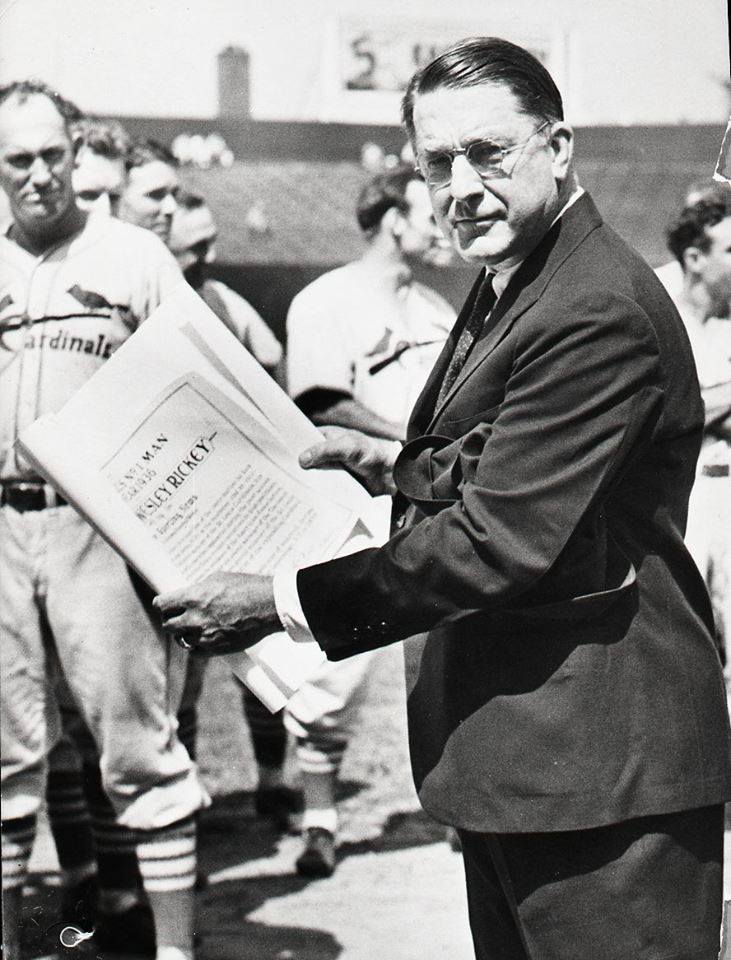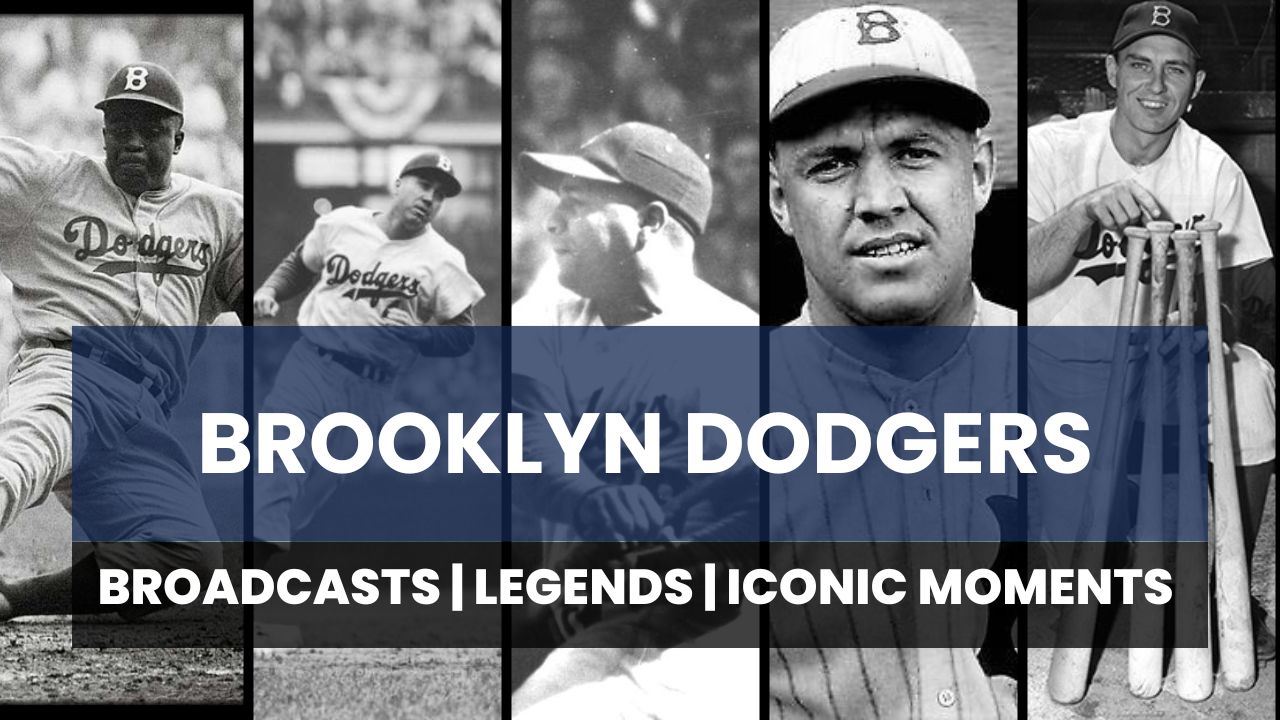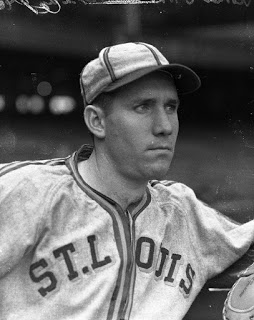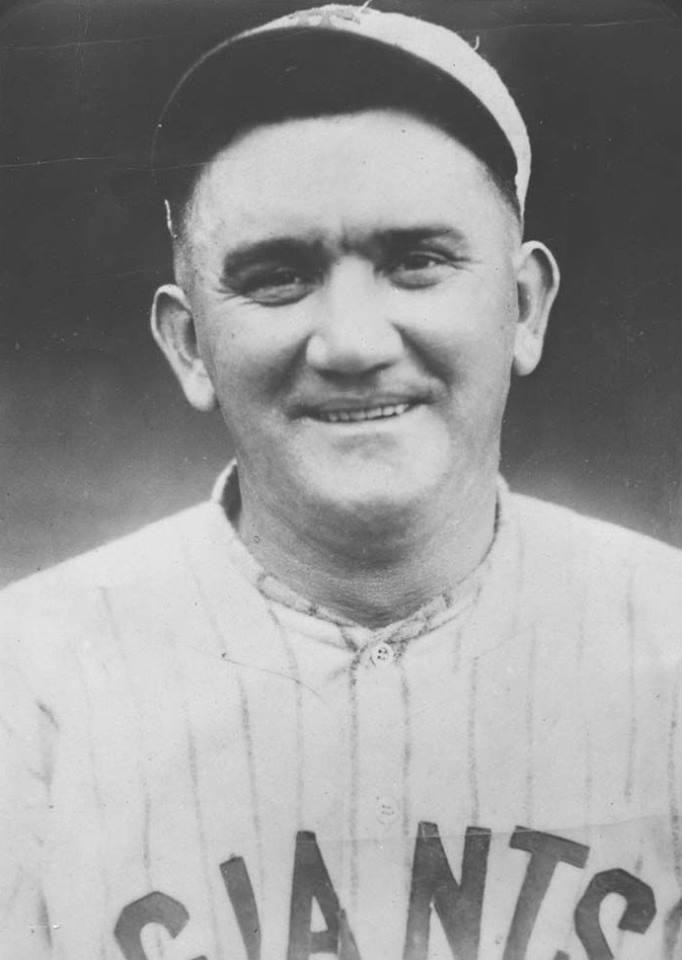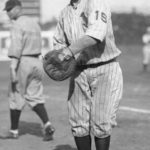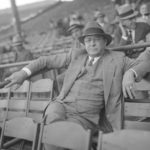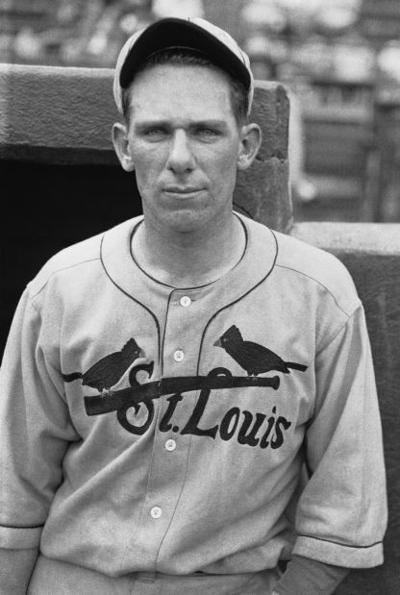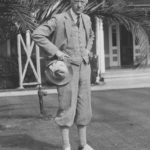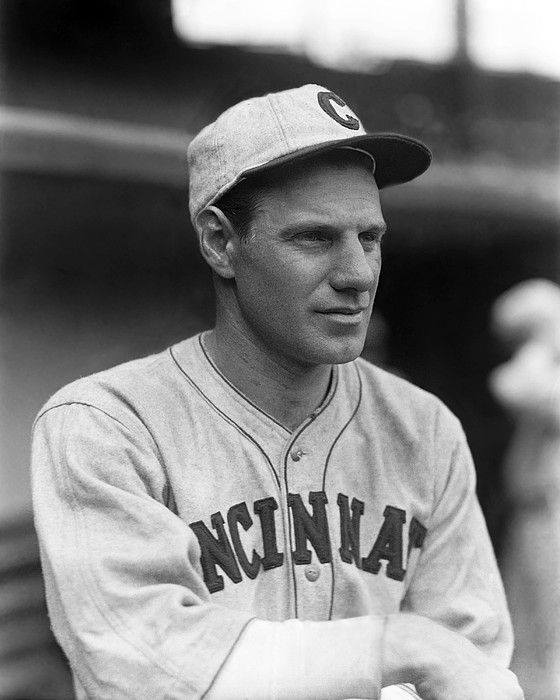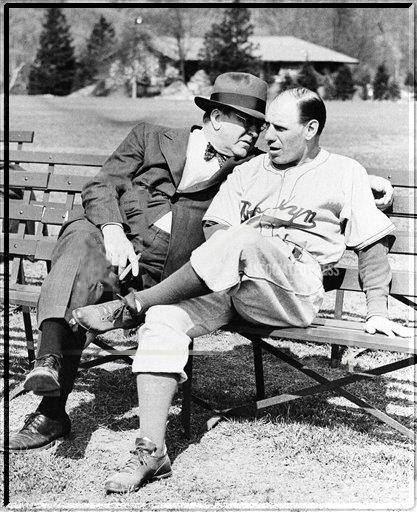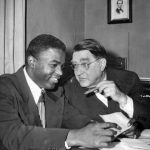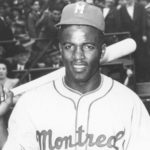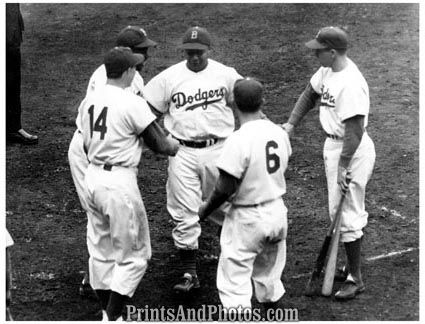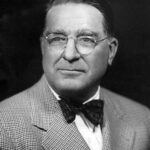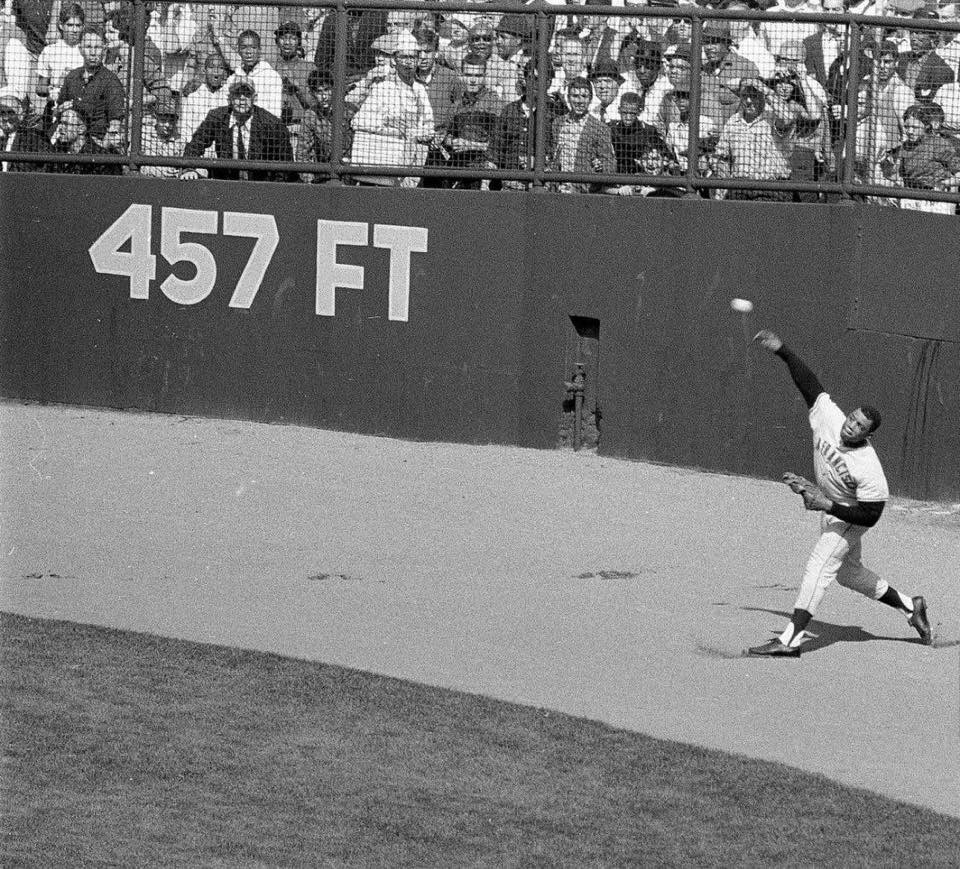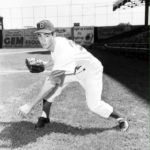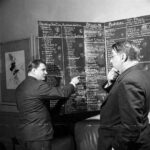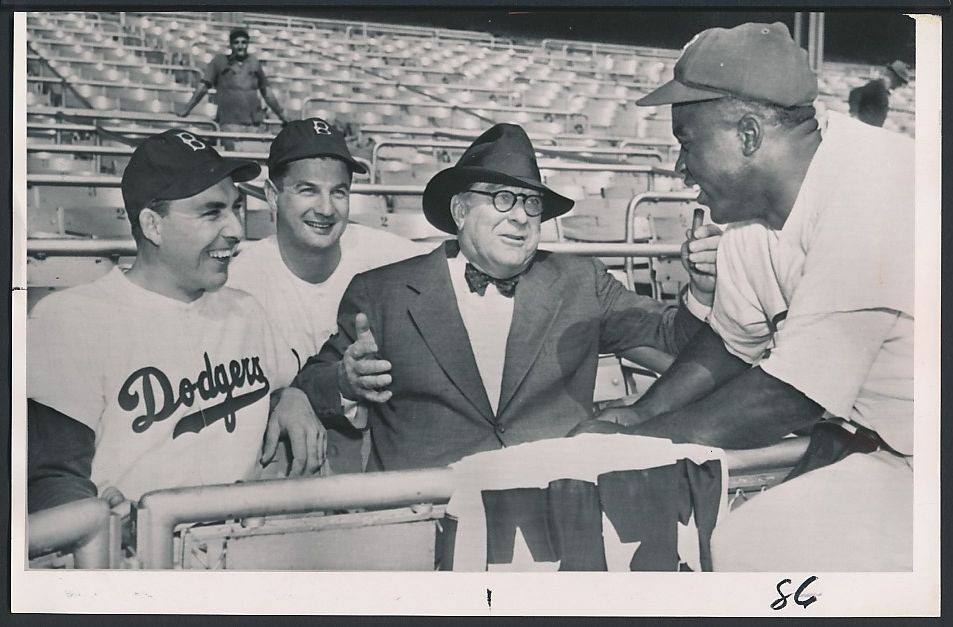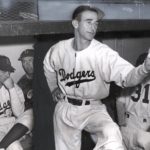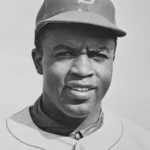Branch Rickey Stats & Facts
VINTAGE BASEBALL MEMORABILIA
Branch Rickey
Positions: Catcher, Leftfielder and First Baseman
Bats: Left • Throws: Right
5-9, 175lb (175cm, 79kg)
Born: December 20, 1881 in Flat, OH
Died: December 9, 1965 in Columbia, MO
Buried: Rushtown Cemetery, Rushtown, OH
School: Ohio Wesleyan University (Delaware, OH)
Debut: June 16, 1905 (2,726th in major league history)
vs. PHA 3 AB, 0 H, 0 HR, 0 RBI, 0 SB
Last Game: August 25, 1914
vs. PHA 1 AB, 0 H, 0 HR, 0 RBI, 0 SB
Hall of Fame: Inducted as Pioneer/Executive in 1967. (Voted by Veteran’s Committee)
View Branch Rickey’s Page at the Baseball Hall of Fame (plaque, photos, videos).
Full Name: Wesley Branch Rickey
Nicknames: The Mahatma
View Player Info from the B-R Bullpen
View Player Bio from the SABR BioProject
Notable Events and Chronology for Branch Rickey Career
Biography
Branch Rickey often said “Never surrender opportunity for security.” It was a motto that would define a career spanning nearly sixty years. Known as an inscrutable dealer who could usually talk his way into what he wanted, Rickey’s innovative approaches to improving the game of baseball were often controversial and met with resistance. The cigar-chomping Rickey, nicknamed “the Mahatma”, revolutionized scouting and training practices and engineered the most important social change in baseball, the breaking down of the color barrier.
Wesley Branch Rickey was born on December 20, 1881. He was raised in the rural environment of southern Ohio. Despite attending a one room schoolhouse, Rickey excelled at academics and snatched up educational opportunities whenever he could. His family was devout fundamental Methodists. Religion played a large role in shaping Rickey’s life philosophies and ingrained a deep sense of right and wrong into the young man. After spending two years as a country school teacher, Rickey enrolled at Ohio Wesleyan University. He became a catcher for the university team but, after taking a paid summer position for a local baseball team, Rickey lost his university athletic eligibility status and could not return to being an active player. He signed on instead as baseball coach. There was a black player on the university team who often suffered from discriminatory treatment while traveling and playing. Rickey took notice and the impression of the injustice stayed with him throughout his lifetime.
Rickey’s early baseball career started off with a two year stint for a Class B team out of Indiana. He was then signed by the Cincinnati Reds organization. His religious upbringing became a deterrent to his game, as Rickey refused to play on Sundays. It was a promise he had made to his mother before beginning his career as a player. Rickey was fired because of this and never played a single game with the Reds. The St. Louis Browns decided to pick him up in 1905 and Rickey spent two years in the position of catcher. He was then traded to the New York Highlanders in 1907, but Rickey never became a key contributor. His performance at a major league level was not quite good enough and Rickey struggled with both batting and fielding. The only statistical record that Rickey holds as a player in the history books is for allowing 13 stolen bases in one game. Plagued with an arm injury and continuous performance issues, Rickey hung up his player uniform.
Baseball was not done with him however. After retiring form the Highlanders in 1907, Rickey pursued his law degree at University of Michigan. He coached the university team at this time, one which included a young George Sisler. In 1912, Rickey took a position as a scout for the St. Louis Browns and became a front office executive in 1913. He signed on former teammate and future Hall of Famer George Sisler and served as a field manager for two years. Rickey’s baseball ventures took a hiatus as World War 1 gripped the nation. Rickey joined the forces and served as a chemical engineer in France. After the war, Rickey returned to St. Louis in 1919, becoming the president and manager for the Cardinals. He was replaced as manager by Roger Hornsby in 1925, a year shy of the Cardinals’ first World Series win in 1926.
Rickey continued on as an executive for the Cardinals’ organization for the nearly twenty years. It was during this time that he began a new method for training major league players. Rickey began acquiring minor league teams and affiliating them with the Cardinals organization. These teams provided a training ground for up and coming players and what is known as the farming system began to take hold. Having invested interests in these teams, along with a solid scouting staff, it allowed the Cardinals to develop some of the best players of that era. The St. Louis Cardinals became extremely successful as a result of this and alarmed baseball commissioner Kenesaw Mountain Landis. Landis felt that the system would create a monopoly of talent and contractual control. He tried to crush the system, even calling for the release of nearly 100 Cardinal players. The success of the farming system was too big to ignore, and other teams began developing their own minor league teams, following Rickey’s plan. The minor league system plays a crucial role in today’s game, allowing teams to secure potential talent and providing players with professional training in preparation for the major league.
Rickey’s influence in developing the St. Louis Cardinals had tangible results. The team won the National League pennant five times and became World Series champions three times within an eight year span from 1926 to 1934. The Cardinals re-surged once again in 1942, beating the Yankees in five games during the World Series. It was to be Rickey’s last season with the Cardinals. Sam Beardon, president of the Cardinals, and Rickey had always been known for butting heads. Frequent disagreements had led to a strained relationship, and when Rickey was offered the general manager position and an opportunity to became part owner of the Brooklyn Dodgers, he accepted. He went on to develop a solid farming system for the Dodgers, aggressively seeking out talented young players. He developed the first full time spring training facility in Veros Beach, Florida and his implementation of batting helmets, cages and pitching machines became a mainstay for developing solid skills. Rickey had transformed the minor league system, and as he began his time with the Dodgers, a new revolution was taking shape in his head.
Racial discrimination had always been a point of contention with Rickey. From the unfair treatment of his college teammate, to the barring of black fans in the Cardinal grandstand, Rickey felt these practices unjust. The Negro League was a thriving business and boasted many talented players. Because of an unwritten code in the game, no black player had ever played with a nationally recognized major league team. Segregation had been a main stay in baseball, both due to the societal factors as well as economic ones. Stadium owners would rent their venues out to the Negro League while on the road and major league teams profited from the transactions. The social movement for equal rights was still in the early stages and lines of color had not been crossed. Rickey was planning on changing that.
He saw that the talent found in the Negro lead could provide a huge boost to major league teams. He also realized that if he could snag those players up early, he would be far ahead of other teams in utilizing that talent. Rickey started scouting in hopes of finding the perfect player, one that could stand up to taunts and discrimination, as well as one that would prove his merit on the field regardless of color. After an intense search, Rickey found the one. In the fall of 1945, Rickey signed Jackie Robinson to the Dodgers’ AAA team, the Montreal Royals. The impact on the game was enormous. Robinson went on to join the Dodgers as a professional player and was named the first ever Rookie of the Year in 1947. His talent and personality made him a fan favorite. Baseball became one of the first national organizations, athletic or otherwise, to transcend color. The signing of Jackie Robinson bolstered the equal rights movement and baseball went on to accept and recognize the talent of the black players. Even owners who disagreed with the move were forced to follow in Rickey’s footsteps in order to remain competitive.
Rickey’s contract with the Dodgers expired in 1950. Plagued by similar managerial disagreements as he had experienced in St. Louis, Rickey sold his share in the club and became general manager of the Pittsburgh Pirates, where he served as chairman until 1959. Rickey’s influence registered on the club and changes made during his tenure led the Pirates to their first world championship in 1960, one year after Rickey had retired. The aging Rickey continued to bring innovative ideas to the game and, in 1960, was appointed president of the Continental League. Developed to rival the National and American leagues and bring more teams to the majors, this venture proved to have less success than other experiments promoted by Rickey in the past. The new league was promptly forced into dissolving by the other two divisions. The formation and sub sequential disbanding of the Continental League had far reaching consequences however. The American and National Leagues saw the need for expansion, both undergoing transformations in divisions and number of teams that were playing, shaping divisions much in the same way as it is seen in today’s game. Branch Rickey is the perfect example of the myriad of forces that define and shape the game away from the field. As a player, his performance was bleak and there have been many, many players to step onto the field that supercede him in talent. But rarely has there been as an innovative and successful of a businessman to shape the game. His outside of the box thinking set new standards, opening up doors that were once closed and integrating a solid, effective minor league system. These achievements were officially recognized when Rickey was inducted into the Hall of Fame in 1967, and an annual award in his name is given to the major league player who best exemplifies humanitarian effort and community involvement. Branch Rickey died in 1965 after collapsing during his induction into the Missouri Sports Hall of Fame. But his plaque in Cooperstown will hang always, recognizing a man who pioneered so many changes to the game.
@ET-DC@eyJkeW5hbWljIjp0cnVlLCJjb250ZW50IjoicG9zdF90YWdzIiwic2V0dGluZ3MiOnsiYmVmb3JlIjoiTGVhcm4gTW9yZSBhYm91dCB0aGUgdGVhbXMsIHBsYXllcnMsIGJhbGwgcGFya3MgYW5kIGV2ZW50cyB0aGF0IGhhcHBlbmVkIG9uIHRoaXMgZGF0ZSBpbiBoaXN0b3J5IC0gLSAtIC0gLSAtIC0gIiwiYWZ0ZXIiOiIiLCJsaW5rX3RvX3Rlcm1fcGFnZSI6Im9uIiwic2VwYXJhdG9yIjoiIHwgIiwiY2F0ZWdvcnlfdHlwZSI6InBvc3RfdGFnIn19@

